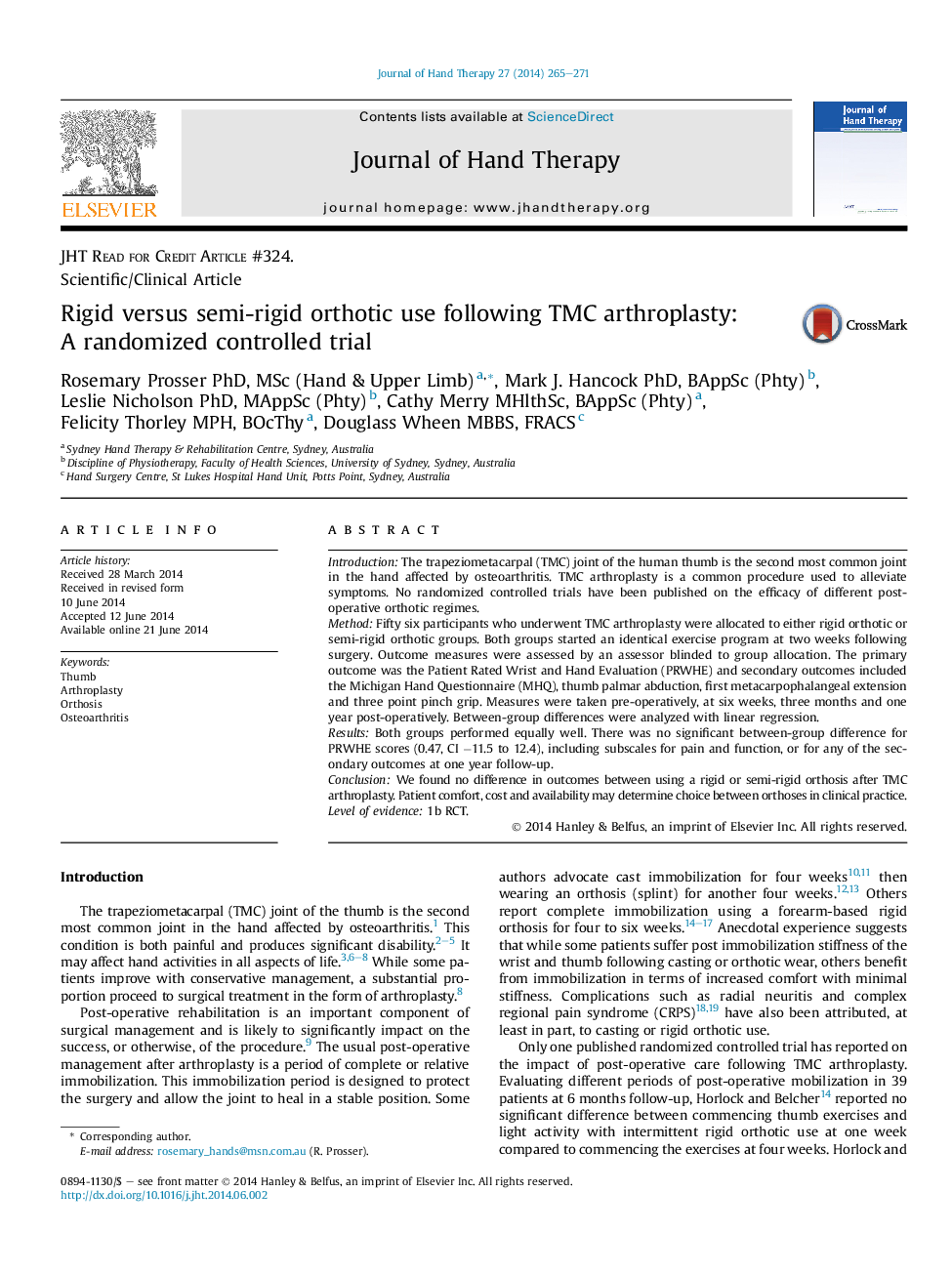| Article ID | Journal | Published Year | Pages | File Type |
|---|---|---|---|---|
| 2698176 | Journal of Hand Therapy | 2014 | 7 Pages |
IntroductionThe trapeziometacarpal (TMC) joint of the human thumb is the second most common joint in the hand affected by osteoarthritis. TMC arthroplasty is a common procedure used to alleviate symptoms. No randomized controlled trials have been published on the efficacy of different post-operative orthotic regimes.MethodFifty six participants who underwent TMC arthroplasty were allocated to either rigid orthotic or semi-rigid orthotic groups. Both groups started an identical exercise program at two weeks following surgery. Outcome measures were assessed by an assessor blinded to group allocation. The primary outcome was the Patient Rated Wrist and Hand Evaluation (PRWHE) and secondary outcomes included the Michigan Hand Questionnaire (MHQ), thumb palmar abduction, first metacarpophalangeal extension and three point pinch grip. Measures were taken pre-operatively, at six weeks, three months and one year post-operatively. Between-group differences were analyzed with linear regression.ResultsBoth groups performed equally well. There was no significant between-group difference for PRWHE scores (0.47, CI −11.5 to 12.4), including subscales for pain and function, or for any of the secondary outcomes at one year follow-up.ConclusionWe found no difference in outcomes between using a rigid or semi-rigid orthosis after TMC arthroplasty. Patient comfort, cost and availability may determine choice between orthoses in clinical practice.Level of evidence1b RCT.
